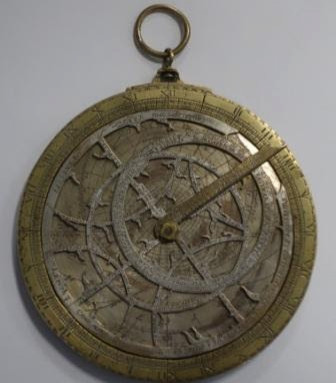Swedish Astrolabe From 1590 Recovered, ‘Astronomical Computer’ Stolen From Skokloster Castle [PHOTO]

A long lost astrolabe reported stolen from a Swedish museum more than 10 years ago has surfaced in Italy.
The instrument used to measure time and space dates to 1590 and is valued at $750,000, the Associated Press reports. The rare astrolabe was found by an anonymous Italian collector.
"Usually I'm recovering stolen paintings by Matisse or Picasso -- and those are a lot sexier," said Christopher Marinello, a lawyer at Art Loss Register, a London based company that operates a database of lost and stolen art, antiques and collectables.
“But I must say, it's really fascinating and so ornate," Marinello told a Swedish site called The Local. "It's amazing to think that you can still use it to tell time or to write an astrological map of the stars."
Marinello said that he will return the astrolabe on Aug. 21 to the Skokloster Castle, about 40 miles north of Stockholm.
The astrolabe was stolen from Skokloster Castle in 1999 during a series of thefts involving small objects and rare books. The potential culprit could have been Anders Burius, former head of the rare books department at Sweden’s Royal Library. In 2004, he admitted to stealing the rare books and manuscripts between 1986-2004. When he was arrested, Burius told authorities that he used the valuable items to “support his lifestyle of Armani suits, Cuban cigars, and Mercedes Benzes.”
He later committed suicide in his apartment by cutting the gas line and slitting his wrists. The subsequent explosion injured 11 people in a central Stockholm neighborhood.
“It’s still a mystery how it was taken,” Skokloster Castle curator Bengt Kylsberg said, adding that Burius did have access to the castle’s collections during the time of the thefts. “We don’t intend to investigate it further.”
The Italian collector that found the astrolabe intended to sell it in London. Marinello caught wind of the discovery and negotiated with the collector’s lawyers to recover the stolen artifact and return it to Sweden.
While fewer than 2,000 astrolabes survive, their existence can be traced back as early as the 6th century. Widely used in Europe and the Islamic world, the planispheric astrolabe, like the Swedish one, is used as an "astronomical computer" to map the distance between planets, the sun and the stars.
“It’s as good today as it was in 1590,” Kylsberg said about the recovered astrolabe. “It still can be used, if you know how to work it and do the calculations.”
© Copyright IBTimes 2024. All rights reserved.






















